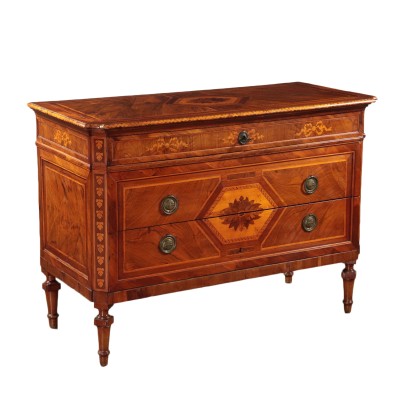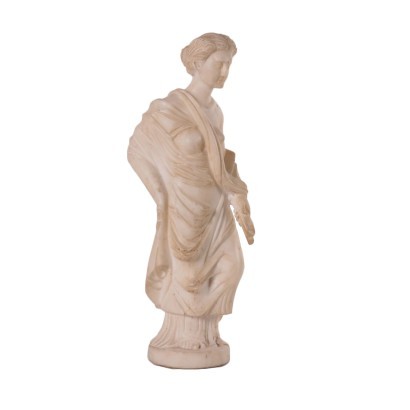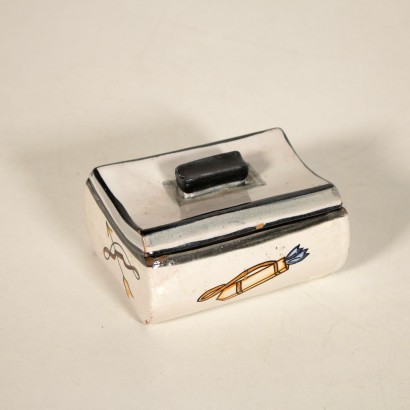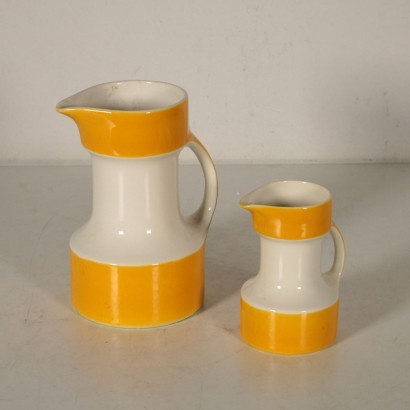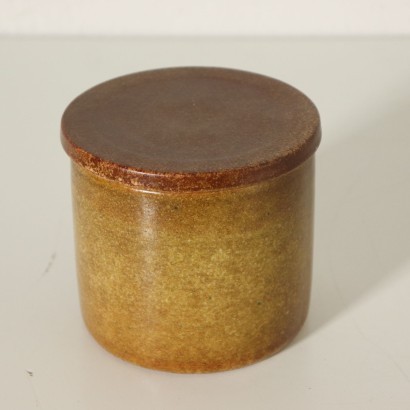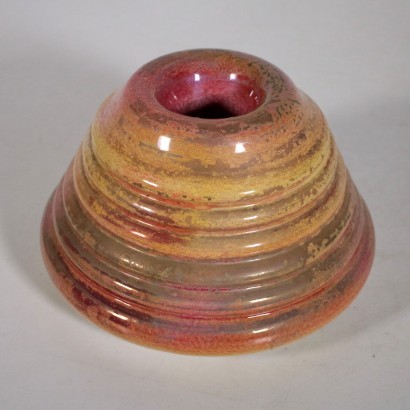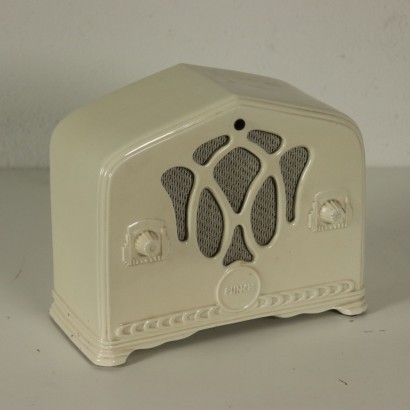Inlaid Chest of Drawers Walnut Italy 19th Century
Features
Style: Neo-Classical (1765-1790)
Age: 19th Century / 1801 - 1900
Origin: Milano, Lombardia, Italy
Description
Chest of drawers with three drawers; underneath the top ther is a drawer smaller than the other two that have a retractable chain that create an single surface for the inlay; pillars grooved at 45°, round feet. The chest of drawers is made with solid walnut and is entirely veneered with striped walnut with walnut burl veneer reserves between marple threads and inlays of various woods. The band underneath the top includes the first drawer and is embellished with inlaid ribbons with love knot; on the front there are geometric reserves on which takes place a leafy rose window in the middle, pattern repeated on the counter, fringed by a frame of following leaves. Pillars are aslo inlaid with subsequent leaves; on the sides there is a large lowered reserve on which is inlaid a lyre. The turned ending of the feet have been replaced and as well handles have been added, while coeval is the entire custruction and hardware.
Product Condition:
Cabinet in fair condition. Wear consistent with age and use.
Dimensions (cm):
Height: 91,5
Width: 128
Depth: 58,5
Certificate issued by: Enrico Sala
Additional Information
Notes historical bibliographic
The mobile presents a strong close with the production of the bottega Beetles to the point of being able to say that it is a realization of a student of the master came out of the shop. The construction of the mobile and the cutting of the struts, a detail that characterizes the architecture of the mobile give the idea that the cabinet maker should have learned certain techniques and also the drawings of the inlays are so similar, albeit simplified to those present in the Workshop of Maggiolini not lascir doubts on the formation of the cabinet maker. Are the reduced palette of woods available and some imperfection in the realization of the inlays to make us understand that cannot be an works the exit from the workshop of the master. The reference drawings are still there and are for the rosettesStyle: Neo-Classical (1765-1790)
This historical period includes a first phase that can be properly defined as the Louis XVI style.nOnly at a later time, with the maturation of archaeological fashions, was a new vision of furnishing civilization formulated and codified, now fully attributable to the Neoclassical Style.
In fact, both trends coexisted in unison until the last years of the eighteenth century.
nIn the field of cabinet making, the Directoire, Retour d'Egypte, Consular and Empire styles also fall within the neoclassical era.
nFind out more about Neoclassicism with the insights from our blog...
n



